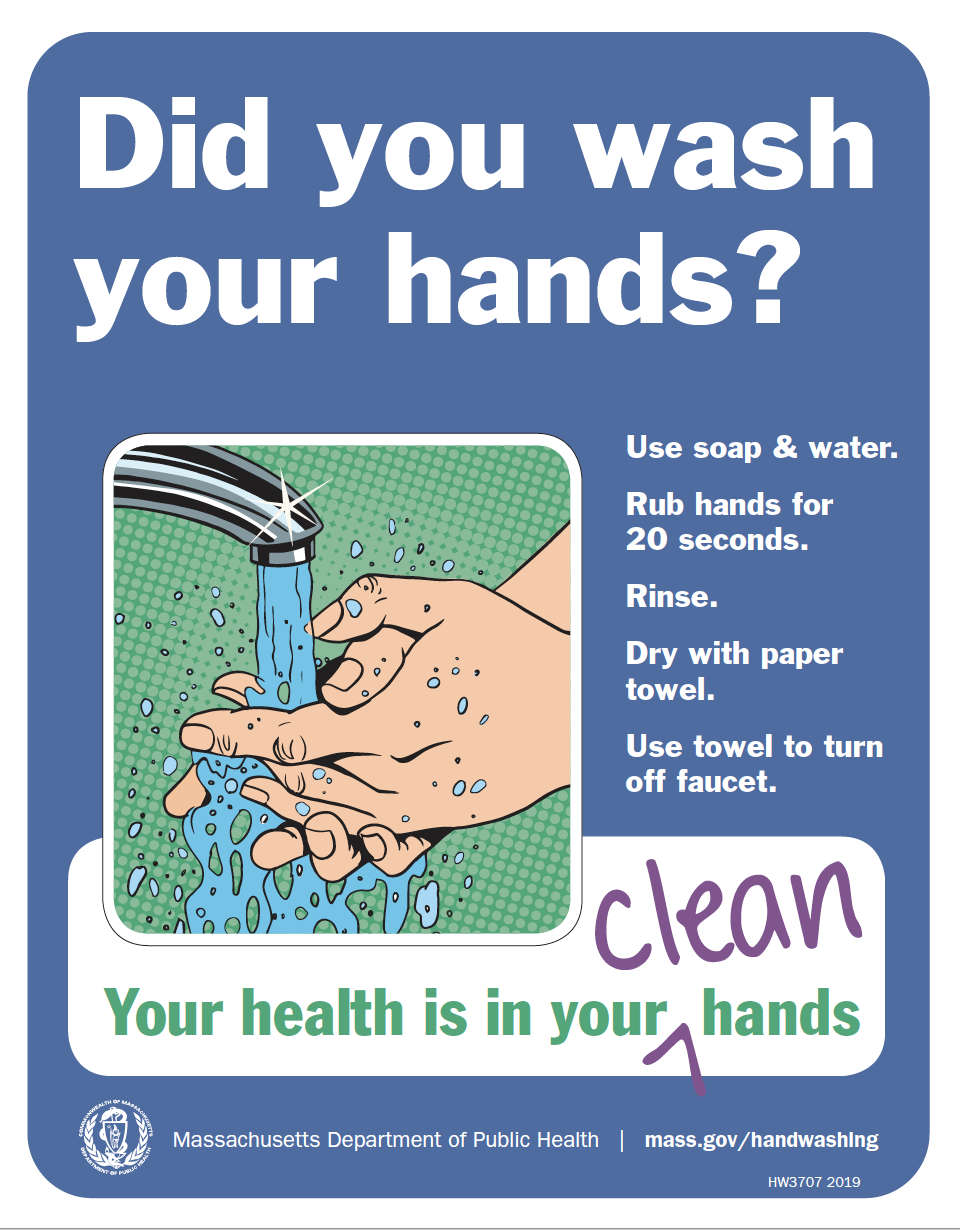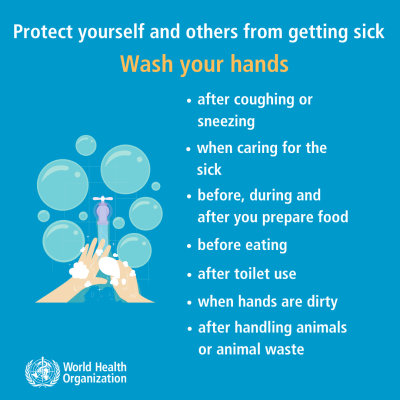The Significance of Hand Hygiene
Introduction
Hand hygiene is one of the simplest and most effective ways to stop the spread of diseases. However, despite being simple, hand hygiene is frequently ignored which causes important public health challenges. This article explores why hand hygiene is essential, science behind it, best techniques of hand washing and its wider implications for individual and public health.
The Science of Hand Hygiene
Pathogens can easily be transported through hands. Many germs may spread by touching various surfaces, items or even ourselves with our hands. Appropriate hand hygiene by WHO can reduce respiratory infections, gastrointestinal infections as well as other communicable diseases by 50%.
Pathogens on Our Hands
Several common pathogens that may be present on our hands are:
Bacteria: Such as Staphylococcus aureus, Streptococcus species and E. coli.
Viruses: For example influenza virus (flu), norovirus (a major cause of stomach bugs) and coronavirus (the current pandemic).
Fungi: For example Candida species.
These could lead to illnesses ranging from mild colds to such severe ones like gastroenteritis or pneumonia.
The Role of Hand Hygiene in Preventing Disease
Reducing Healthcare-Associated Infections
Healthcare-associated infections (HAIs) are a major concern in medical settings where health care provider’s hand hygiene is the key in preventing spread of pathogens to patients thus reducing HAIs. Studies reveal that improved hand hygiene practices within the hospitals can lower infection rates by up to 40%[1].
Preventing the Spread of Respiratory Infections
Respiratory tract infections such as cold, flu and COVID 19 are mainly transmitted through droplets and contact with surfaces contaminated with respiratory secretions. Regular washing of hands can remove viruses and bacteria from the skin hence reduce risk of infection.
Minimizing Gastrointestinal Infections
Gastrointestinal infections like norovirus or rotavirus are mostly passed via fecal-oral path so it is fundamental to wash our hands after using toilets and before eating or preparing food to prevent such cases.
Effective Hand Hygiene Techniques
Proper hand hygiene means more than a quick rinse under the tap; here are some of the steps for effective handwashing:
Use Soap and Water
Soap and water are good at removing dirt, oils, or germs from the skin on your hands while scrubbing mechanically helps lift these away.
Follow the Correct Technique
The WHO recommends a handwashing duration of at least 20 seconds. Here’s a step-by-step guide:
– Wet your hands with clean, running water.
– Apply enough soap to cover all hand surfaces.
– Rub your hands together, ensuring you scrub all parts, including the back of your hands, between your fingers, and under your nails.
– Rinse your hands thoroughly under running water.
– Dry your hands with a clean towel or air dry them.
Use Hand Sanitizer When Necessary
When the soap and water are not around, one can use an alcohol-based hand sanitizer containing at least 60% alcohol. Apply the Sanitizer to the palm of one hand and rub hands together, covering all surfaces until dry. Hand sanitizers may effectively reduce the number of germs but they are less effective when hands are visibly dirty or greasy.
The Global Impact of Hand Hygiene
Hand hygiene is a critical public health measure with global implications. There exist several key areas where hand hygiene plays a crucial role such as:
Pandemic Prevention and Control
The importance of hand hygiene has been highlighted by COVID-19 pandemic. In addition to mask-wearing and physical distancing, regular hand washing is among the most efficient means to stem the spread out of the virus. Global health organizations have positioned hand hygiene at the center stage for controlling infections.
Improving Maternal and Child Health
In low- middle-income countries, poor hand hygiene contributes significantly to high rates of maternal and child morbidity and mortality rates. Washing hands with soap helps children avoid getting diarrheal diseases as well as respiratory illnesses that ultimately lead to improved health status.
Hand Hygiene in Our Daily Lives
Hand cleanliness is not restricted to healthcare settings only; it is important for day-to-day living. These are some important situations when washing the hands is crucial:
Before and After Having Meals
Before eating, washing hands helps stop harmful germs that cause gastrointestinal infections from being swallowed. Moreover, after eating, you should wash your hands to remove any food particles and pathogens.
After Using the Bathroom
Proper handwashing after using the bathroom is vital as it stops fecal-oral pathogens from spreading. This is especially important in public restrooms and shared facilities.
After Coughing, Sneezing, or Blowing Your Nose
Respiratory secretions may contain viruses and bacteria which can be transmitted through hands. So, by washing your hands after coughing or sneezing or blowing your nose helps to prevent respiratory infections.
After Handling Animals or Animal Waste
Many different kinds of germs are found in pets and other animals. It is essential to always wash off ones’ hands with soap immediately after touching animals, their waste products, or touching anything connected with them considering zoonotic illnesses.
Before and After Taking Care of a Sick Person
By maintaining proper hand hygiene while giving care to an ill person enables preventing the spread of diseases among family members as well as caregiver infection themselves with the illness.
Promotion of hand hygiene: Public health campaigns and education
Efforts required to promote hand hygiene are combined from public health authorities, educational institutions and communities. Here are some approaches to effective promotion of hand hygiene:
Public Awareness Campaigns
Public awareness campaigns play an important part in enlightening people about the significance of hand hygiene. Various media platforms, such as television, radio, social media, and print materials can be used by these campaigns to reach a large number of people. The messages should focus on the importance of washing hands for health purposes and offer explicit guides on how it should be done.
School-Based Programs
Schools make good grounds for promoting hand hygiene. Teaching children about washing their hands early enough can establish lifelong habits. Schools can include a lesson plan about handwashing which includes installation of facilities for washing hands and reminders with incentives for washing hands regularly.
Workplace Initiatives
Employers can promote hand hygiene at workplaces by making available facilities for washing hands, providing sanitizers and availing educational resources on the same issue. Encouraging workers to practice positive behaviors concerning keeping their hands clean will lead to decreased spread of diseases hence healthy workplaces generally improved overall workplace health.
Obstacles to Effective Hand Hygiene:
Despite the obvious advantages of good hand hygiene, a number of obstacles may prevent its application.
Non availability of soap and water: Firstly, soap and clean water are not always readily available in many parts of the world. Promoting hand hygiene requires addressing these obstacles. Public health can be greatly impacted by initiatives to upgrade the infrastructure related to water, sanitation, and hygiene (WASH).
Behavioral Factors: It can be difficult to modify behavior. People might forget to wash their hands frequently or they might not think that handd hygiene is important. In order to promote regular hand hygiene, public health campaigns must address these behavioral factors and offer workable solutions.
Cultural Practices:Hand hygiene practices can be influenced by cultural practices and beliefs. Creating hand hygiene interventions that work requires an understanding of and respect for cultural contexts. Implementing culturally appropriate messaging and interacting with local authorities can help increase the uptake and acceptance of hand hygiene practices.
Economic Constraints: In certain situations, financial limitations may restrict access to resources related to hand hygiene. These obstacles can be addressed by offering hand sanitizers and soap at a discount or for free, along with educational resources.
Conclusion
Maintaining good hand hygiene is an easy yet effective way to stop the spread of infectious diseases. Through appropriate handwashing practices and hand hygiene promotion in diverse environments, we can drastically lower the rate of infections, enhance public health, and save lives. Effective hand hygiene problems call for a multipurpose strategy that includes community involvement, education, infrastructure upgrades, and public awareness campaigns.
The significance of maintaining good hand hygiene in our globalized society cannot be emphasized. Hand hygiene should be prioritised in all settings, including homes, workplaces, schools, and healthcare facilities. We can protect ourselves and others by practicing hand hygiene regularly, which will improve our communities and the overall health of the planet.


























